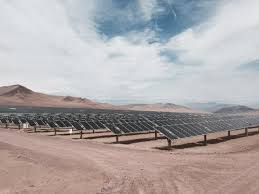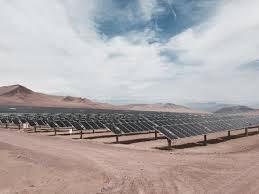
The sun could be the new oil for the GCC countries says a report published by the International Renewable Energy Agency (Irena) at the the ongoing Abu Dhabi Sustainability Week.
According to the Irena, the Gulf countries stand to save $87 billion from lower oil and natural gas consumption if they achieve goals for renewables use by 2030.
By achieving the renewable energy targets that national and sub-national governments have already put in place, the Gulf countries could save 11 trillion litres of water withdrawal - a 16 per cent decrease, save 400 million barrels of oil in the power sector - a 25 per cent decrease, create close to 210,000 direct jobs and reduce the per capita carbon footprint by eight per cent in 2030, the GCC Region' report finds.
"These current targets are entirely within reach. A solar photovoltaic tender in Dubai last year resulted in the record-low electricity price of $0.06 per kilowatt hour - cheaper than domestically produced power from gas-fired generation," pointed out Adnan Amin, director general of Irena.
"The economic and social rationale for the energy transition in the GCC has never been stronger. By maintaining their leadership in the energy sector and embracing their region's abundance of renewable energy resources, GCC countries can ensure their own long-term economic and social prosperity through a clean energy future," he added.
Constituting almost 80 per cent of total revenue for the region's governments, have been the main source of government budget revenues in the GCC has been hydrocarbon exports in the form of crude oil, petroleum products and natural gas.
Lower exports and lower government revenue in the GCC countires is the direct result of the collapse in oil prices since mid 2014 from over $100 per barrel to an all time low of $28 per barrel.
Rising domestic energy demand, driven by rapid industrialisation, growing population and increasing water desalination, has stressed the region's resources, even though traditionally, the economies in the Gulf countries have not been major consumers of energy.
A good portion of oil and gas production has to be consumed domestically, rather than going for exports since 2000 when the domestic energy demands started rising on average five per cent annually.
"The GCC countries have overtaken major consumers such as China, India and Brazil in terms of consumption growth, thereby reducing the share of production that can be exported," pointed out Rabia Ferroukhi, Irena's policy lead and one of the report's authors.
The GCC countries lie in the Global Sunbelt and are endowed with solar resources that parallel those of nearby North African countries, according to the report. Some of the highest solar irradiances in the world can be found in this region.
There is significant potential for solar photovoltaic (panels) deployment in more than 59 per cent of the GCC's surface area. More than 470 gigawatts (GW) of solar PV capacity can be generated if only just one per cent of this area can potentially be used.
Apart for solar power options, countries like Kuwait, Oman and Saudi Arabia hold significant wind resources. Waste-to-energy is another renewable energy possibility, one that would also address the growing waste management challenges in the region.
The plans and targets for renewable energy are gradually translating into projects in the GCC even though the region’s renewable energy sector is still at an early stage and deployment has lagged behind aspirations.
Of the 120 GW of installed power capacity in the region at the beginning of last year, renewable energy was less than one per cent of it.
(Source:www.khaleejtimes.com)
According to the Irena, the Gulf countries stand to save $87 billion from lower oil and natural gas consumption if they achieve goals for renewables use by 2030.
By achieving the renewable energy targets that national and sub-national governments have already put in place, the Gulf countries could save 11 trillion litres of water withdrawal - a 16 per cent decrease, save 400 million barrels of oil in the power sector - a 25 per cent decrease, create close to 210,000 direct jobs and reduce the per capita carbon footprint by eight per cent in 2030, the GCC Region' report finds.
"These current targets are entirely within reach. A solar photovoltaic tender in Dubai last year resulted in the record-low electricity price of $0.06 per kilowatt hour - cheaper than domestically produced power from gas-fired generation," pointed out Adnan Amin, director general of Irena.
"The economic and social rationale for the energy transition in the GCC has never been stronger. By maintaining their leadership in the energy sector and embracing their region's abundance of renewable energy resources, GCC countries can ensure their own long-term economic and social prosperity through a clean energy future," he added.
Constituting almost 80 per cent of total revenue for the region's governments, have been the main source of government budget revenues in the GCC has been hydrocarbon exports in the form of crude oil, petroleum products and natural gas.
Lower exports and lower government revenue in the GCC countires is the direct result of the collapse in oil prices since mid 2014 from over $100 per barrel to an all time low of $28 per barrel.
Rising domestic energy demand, driven by rapid industrialisation, growing population and increasing water desalination, has stressed the region's resources, even though traditionally, the economies in the Gulf countries have not been major consumers of energy.
A good portion of oil and gas production has to be consumed domestically, rather than going for exports since 2000 when the domestic energy demands started rising on average five per cent annually.
"The GCC countries have overtaken major consumers such as China, India and Brazil in terms of consumption growth, thereby reducing the share of production that can be exported," pointed out Rabia Ferroukhi, Irena's policy lead and one of the report's authors.
The GCC countries lie in the Global Sunbelt and are endowed with solar resources that parallel those of nearby North African countries, according to the report. Some of the highest solar irradiances in the world can be found in this region.
There is significant potential for solar photovoltaic (panels) deployment in more than 59 per cent of the GCC's surface area. More than 470 gigawatts (GW) of solar PV capacity can be generated if only just one per cent of this area can potentially be used.
Apart for solar power options, countries like Kuwait, Oman and Saudi Arabia hold significant wind resources. Waste-to-energy is another renewable energy possibility, one that would also address the growing waste management challenges in the region.
The plans and targets for renewable energy are gradually translating into projects in the GCC even though the region’s renewable energy sector is still at an early stage and deployment has lagged behind aspirations.
Of the 120 GW of installed power capacity in the region at the beginning of last year, renewable energy was less than one per cent of it.
(Source:www.khaleejtimes.com)





